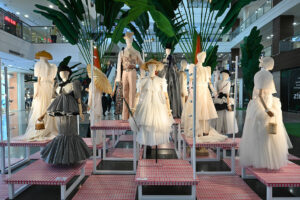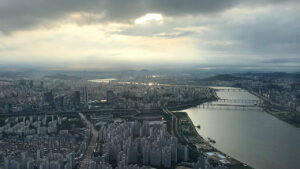‘Ternocon 3 Exhibit’ to travel outside Metro Manila

WHILE the “Ternocon 3 Exhibit” at the Ayala Center ended this weekend, the Cultural Center of the Philippines (CCP) is going to bring it to other cities this year and the next.
During a press tour of the exhibit on April 12, which brought guests around the exhibit’s different sections at Greenbelt, Glorietta, and the Ayala Museum, CCP Vice-President and Artistic Director Dennis Marasigan said that this exhibit tour will be done in cooperation with the Office of the First Lady, the CCP Regional Art Centers, and the CCP’s Cultural Exchange Department.
Other terno-making activities will also be planned with the travelling exhibit. “We want to bring this to Mindanao, primarily because they’re not a big terno country. Of course, we want to bring it also to the Visayas. Right now, we’re having negotiations with a place that can be something like this where people can go and just see it,” he told BusinessWorld.
“Ternocon” is a biennial event by clothing brand Bench and the CCP that joins fashion designer mentors with young designers for a contest and fashion show that celebrates one of the country’s national dresses, the terno.
Evolving from the traje de mestiza, it put together the separate pieces of that outfit — a skirt (the saya), a blouse (the baro), a fichu (the panuelo), an overskirt (the tapis) — and makes it into a single piece. The terno transforms the wide pagoda sleeves of the baro into the famed butterfly sleeves that frame the face. The evolution of the traje de mestiza into the terno began in the 1900s, during the American period of colonization, and reached its zenith in the 1950s to the 1970s, when first ladies (especially Luz Magsaysay, Eva Macapagal, and Imelda Marcos) were seen at state events wearing the dress (not to mention the various society ladies who wore it at balls).
This year, “Ternocon” was shown in January at the CCP’s Tanghalang Ignacio Gimenez Black Box Theater. Mentors included Dennis Lustico, Chito Vijandre, Ricky Toledo, Joey Samson, Hannah Adrias (who won the gold medal for “Ternocon” in 2020), and chief mentor Inno Sotto. Their creations, as well as those of the 13 finalists, were shown at the exhibit.
“Ternocon” mentor Mr. Lustico worked with a sophisticated color palette executed in beaded piña cloth, point d’esprit, lace, fishnet, taffeta, duchesse satin, and silk organza. A motif conveyed in ostrich feather work, beads, and rhinestones were inspired by a cluster of coconut trees that he had seen from one of his trips around the country.
At the Ayala Museum, Messrs. Vijandre and Toledo showed off their grand campy vision with vintage textiles, lace, and the songs of Imelda Papin. Mr. Samson drew inspiration from national hero Jose Rizal and his many muses, including his nine romantic partners and his mother Teodora, fusing Western menswear and feminine Filipiniana elements. Ms. Adrias showed clothes featuring fractured and distressed materials, in a palette of amber, moss, teal, bronze, gold, and gray.
This year’s gold medalist Yssa Inumerable showed off a vision with Gibson Girls from the turn of the 20th century, according to a release. “Her joyous take on the balintawak [the more informal version of the terno] included gently tweaked versions of all the traditional components, using piña, jusi, and inabel cloth from Abra. She also used colorful folk style embroidery called bordang Taal.” Silver medalist Gabbie Sarenas showed her skill in embroidery with three-dimensional sampaguitas, and bronze medalist Glady Rose Pantua embroidered her winning entry with birds and elements of Filipino culture. Particularly eyecatching was the balintawak made by Glyn Alley Magtibay, which used X-ray sheets to form the sleeves.
Mr. Marasigan told BusinessWorld in an interview about the importance of bringing these clothes off the stage and on the ground. “People have thought of the terno as a costume. It is our national dress. It should be considered as something that you can wear every day. Bringing it to a place like this [the mall], I think, brings it closer to the whole idea that it’s something that should be commonplace.” — Joseph L. Garcia




